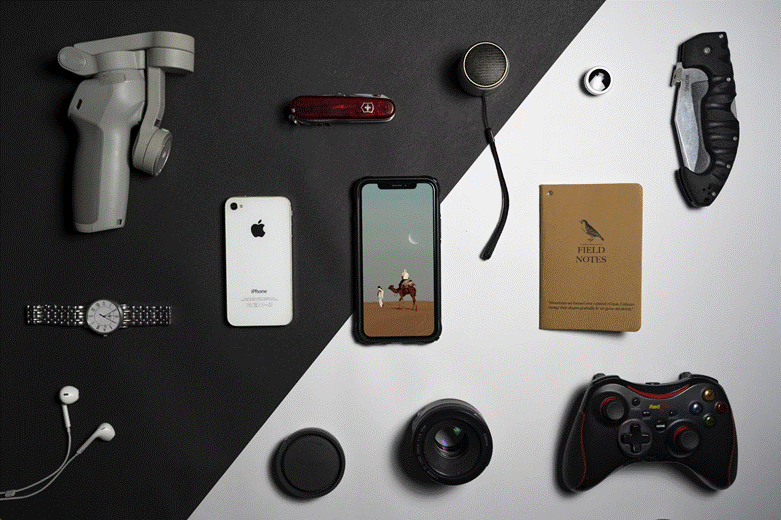Carving on objects is a very old skill. Solid wood, shells, or jade can become a platform to display their carving skills. Metal carving, as the name suggests, is carved on the surface of metal materials.
In the West, the modern golden carving technique evolved from ivory carving. More than 200 years ago, sailing sailors used to carve whale teeth as a pastime and give them to their loved ones as part of their corsets. Gradually, carving techniques moved from whale teeth to shells, ivory, and metals such as gold, silver, copper, and iron.
When carving, the sculptor needs to fix the object on the rotating engraving table, and then use a special sharp tool to outline the metal mold. They then use a pneumatic engraver to gradually engrave the details of the three-dimensional pattern with meticulous engraving techniques. They will depict the curvature and depth of the pattern with an accuracy of up to a tenth of a millimeter. The result is a beautiful pattern.
Inlay is an important part of carving technology. It uses copper, silver, gold and other metal materials embedded in the sculpture body to make the whole sculpture more rich and full of color and highlight the focus. As an important application in Western hand-made metal carving, hot and cold weapons are extremely important carriers. The intricate carvings and inlays on the cold killer give it high artistic value.
There are four main application scenarios for metal carving in Europe: high-end watches; Shotguns and pistols; Custom tools and locomotives. Its techniques are mainly divided into three kinds: first is the rolling thread carving from Britain; second is Brino dot carving or banknote line carving from Italy; third is the high relief from Germany.
Watches and Engraving
In the 17th century, the golden eagle technique, which was introduced to Switzerland by craftsmen taught by Hugueno in France, became an important feature of the watch industry. The most traditional gold carving is entirely hand-made, and the engraver uses various tools to carve out patterns and patterns between the square inches of the dial or splint, thus giving the clock a stronger expression and personality. But after all, the area of the watch parts is limited, and there can be no mistakes, so this will train the carving skills of the engraver. Even the guilloche, which embellishes the pendulum, requires a skilled craftsman to master and is carried out slowly under a microscope. As for the engraving of complex movement patterns, it not only requires profound aesthetic statements and rich imagination but also requires the sculptor to fully understand the design orientation and structure of the watch.
In the industry regulations in the field of gold sculpture, there are quite strict regulations on the preparation process and carving technique of the engraver, and even the carving posture, to ensure the art and appreciation of the work.
On the movement of this watch, the gold engraver has reproduced the cityscapes of five regions: Switzerland, France, Japan, China and Hong Kong. Although the wide and clear bridges make it easier for artistic imagination to be utilized, it was still a matter of careful consideration for the gold engraver to present the different natural features of the same movement layout unobtrusively. The subsequent polishing and finishing are also important, as the meticulousness of this process determines the integrity of the design so that it can be viewed from any angle in perfect harmony.
Gun and Engraving
The carving craft of guns, which originated in England, prevailed in the steam age. The British take their playthings very seriously. As a result, the use of beautifully crafted guns was very popular among the nobility. In the beginning, the carving of the gun was mainly focused on the carving of the handle. The handles of ancient European guns were mostly made of wood, and very expensive guns were also made of precious metals or ivory. Later, with the development of metal carving technology and chiseling and other carving techniques, craftsmen began to make a big deal about the metal body of guns.
Today in Britain, Russia and the United States some craftsmen specialize in carving guns and compete in the art of carving guns. Whether it is the Chinese pattern or the modern personality pattern, the exquisite carving and the clever composition have given cold firearms a new life. These exquisitely carved pistols make everyone want to own them.
The M1911 was once a common weapon of the U.S. military on the battlefield, and it survived World War I, World War II, the Korean War, the Vietnam War, and the Persian Gulf War.
The M1911 has seen so much combat that it has become the quintessential American pistol. Millions of Americans are keen collectors of M1911 pistols which have undergone various daring modifications. Many other gun companies were created to modify the M1911 pistol. The M1911 is America’s favorite.
Knives and Engraving
Modern first-class carving masters do not stick to one technique but organically combine the uses. The United States has a “Weapon Engraver’s Association of America,” or FEGA. There are 48 master sculptors and 75 ordinary members. Weapon carving is actually metal carving. The first application is firearms, and the second is knives, which account for the vast majority of the works.
This is the most complex style of modern knife carving, which combines various techniques. This knife is carved by FEGA master carver Cai Changjun. He is best at blending gold, silver and copper into different components and different colors of alloys, according to his own ideas applied in the inlay of the knife.
Locomotive and Engraving
This is the perfect combination of decorative art and refit art, and the craftsmen decorate the locomotive and the metal parts of the locomotive with the technique of carving. They changed the original appearance of the locomotive, making them more artistic and intriguing, and enhancing people’s pursuit of quality life.
Gold carving technology has a very high demand for craftsmen. They should not only master the skilled skills that have been tempered, but also have the creative and aesthetic qualities of artists, and more importantly, the perseverance of the spirit of ingenuity. It usually takes at least 10 years of sculpting experience to transform hard metal into soft lines.
If you have the opportunity, you must collect a piece of gold sculpture and savor its never-ending mark of time.













